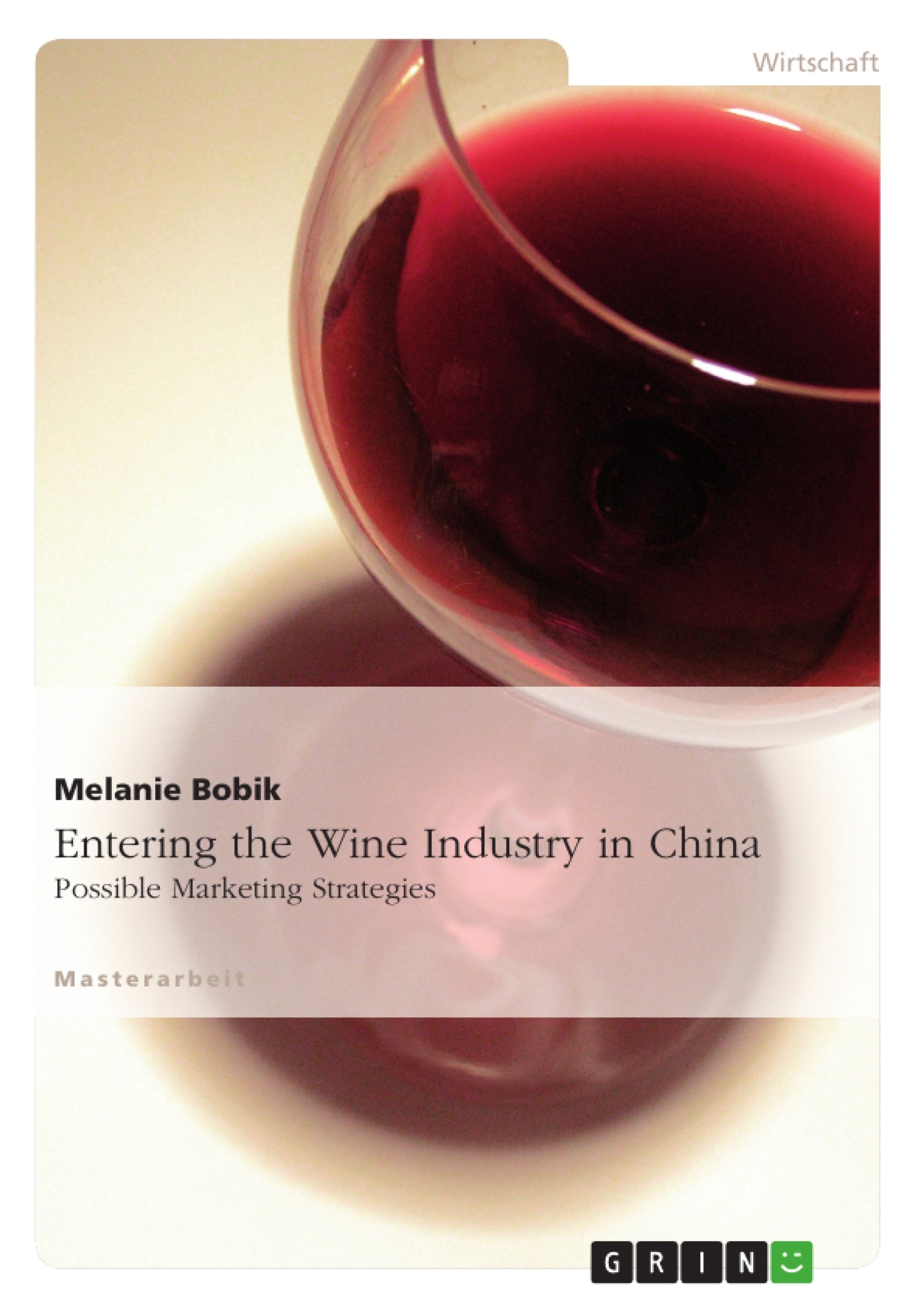China is turning into one of the world’s largest, most lucrative food and beverage markets. With a growing middle class, the demand for premium lifestyle products is constantly increasing. A new generation of consumers, typically located in urban areas, is emerging, with more disposable income and a greater awareness and willingness to pay for high quality, often imported products – including wine. Wine has become “fashionable” as a symbol of social status and this trend is likely to continue. Further, the health benefits associated with red wine in particular, have convinced some consumers to switch from traditional Chinese alcoholic beverages to grape wine.
Although China traditionally is a rice-wine-consuming country and unlike in many Western countries, grape wine is considered a luxury product, the grape wine market1 has grown rapidly since its emergence in the mid 1990s, with still wine being the most lucrative. According to a recent survey, in 2009 the Chinese wine market generated total revenues of US$ 7,2 billion which constitutes a compound annual growth rate of 5,3% for the period from 2005 to 20092. As wine consumption in China is closely related to income, there is no end in sight to this positive trend.
Inhaltsverzeichnis (Table of Contents)
- 1. Introduction
- 2. A Brief History of Wine in China
- 2.1. Chinese Tradition and Alcoholic Beverages
- 2.2. The Emergence of Wineries
- 2.3. The Asian Crisis and its Aftermath
- 3. China's Wine Industry: Facts and Figures
- 3.1. Market Value and Structure
- 3.2. China's Domestic Wine Industry
- 3.2.1. Wine Regions and Brands
- 3.2.2. Major Players and their Strategies
- 3.2.3. Preferences and Prices
- 3.2.4. Trends for Chinese Wines
- 3.3. Imported Wines in China
- 3.3.1. Main Exporting Countries
- 3.3.1.1. France
- 3.3.1.2. Australia
- 3.3.1.3. Chile
- 3.3.1.4. Italy
- 3.3.1.5. The United States
- 3.3.1.6. Germany
- 3.3.2. Prices and Preferences
- 3.4. Foreign Wine as an Asset
- 3.5. Policy Environment
- 3.5.1. Tariff Regulations
- 3.5.2. Labeling
- 3.6. Distribution Channels
- 3.6.1. Importers and Wholesale Distributors
- 3.6.2. On-Trade and Off-Trade Distribution
- 3.7. Excursus: EU Agricultural Exports to China
- 4. Market Entry Strategies
- 4.1. The Driving Forces of the Market
- 4.1.1. Competition
- 4.1.2. Entry Barriers
- 4.1.3. The Power of Buyers
- 4.1.4. The Power of Suppliers
- 4.1.5. Threat of Substitutes
- 4.2. The Strategic Marketing Framework
- 4.2.1. The Chinese Wine Consumer
- 4.2.2. Product
- 4.2.2.1. Product Adaptation
- 4.2.2.2. The Country-of-Origin-Effect
- 4.2.2.3. Counterfeits versus Originals
- 4.2.3. Price
- 4.2.3.1. High Costs for Importers
- 4.2.3.2. Premium Price Strategy for Imported Wines
- 4.2.4. Place
- 4.2.4.1. The Online Marketplace
- 4.2.5. Promotion
Zielsetzung und Themenschwerpunkte (Objectives and Key Themes)
This paper aims to analyze the Chinese wine market, focusing on the behavior of Chinese wine consumers and exploring potential marketing strategies for foreign importers. It investigates the market's growth, challenges, and opportunities.
- Growth and development of the Chinese wine market
- Characteristics and preferences of Chinese wine consumers
- Market entry strategies for foreign wine importers
- Impact of policy and regulations on the wine market
- Competitive landscape and challenges within the industry
Zusammenfassung der Kapitel (Chapter Summaries)
Chapter 1: Introduction provides an overview of the rapidly growing Chinese wine market, highlighting the increasing demand for premium products and the unique characteristics of this emerging market. It introduces the central question of how foreign importers can effectively enter this dynamic market.
Chapter 2: A Brief History of Wine in China explores the historical context of alcoholic beverage consumption in China, differentiating between various types of alcoholic drinks and focusing on the evolution of grape wine. It acknowledges the complexities of translating the term “wine” into Chinese.
Chapter 3: China's Wine Industry: Facts and Figures delves into a detailed analysis of the Chinese wine market, examining market value, structure, domestic production, imported wines, distribution channels, and relevant policies. This section looks at key players, pricing, and consumer preferences, both for domestic and imported wines.
Chapter 4: Market Entry Strategies examines the factors driving market growth, including competitive pressures, entry barriers, and the power of buyers and suppliers. This chapter also analyzes the key elements of a strategic marketing framework for wine importers in China, focusing on product adaptation, pricing, distribution and promotional strategies.
Schlüsselwörter (Keywords)
Chinese wine market, wine consumption, consumer behavior, market entry strategies, imported wines, marketing, distribution channels, policy environment, competition, premium products.
- Arbeit zitieren
- M.A. Melanie Bobik (Autor:in), 2010, Entering the Wine Industry in China, München, GRIN Verlag, https://www.grin.com/document/187541



